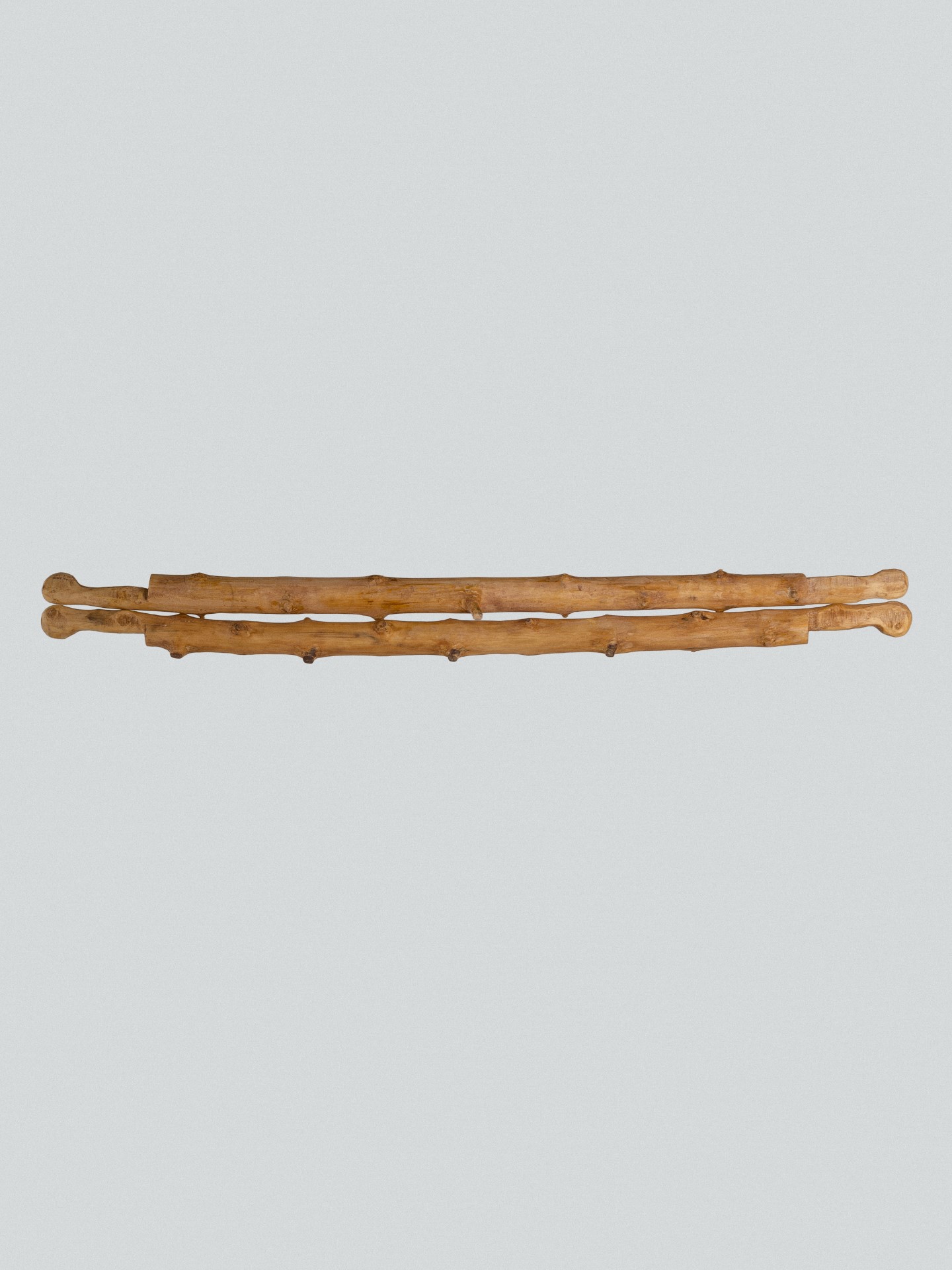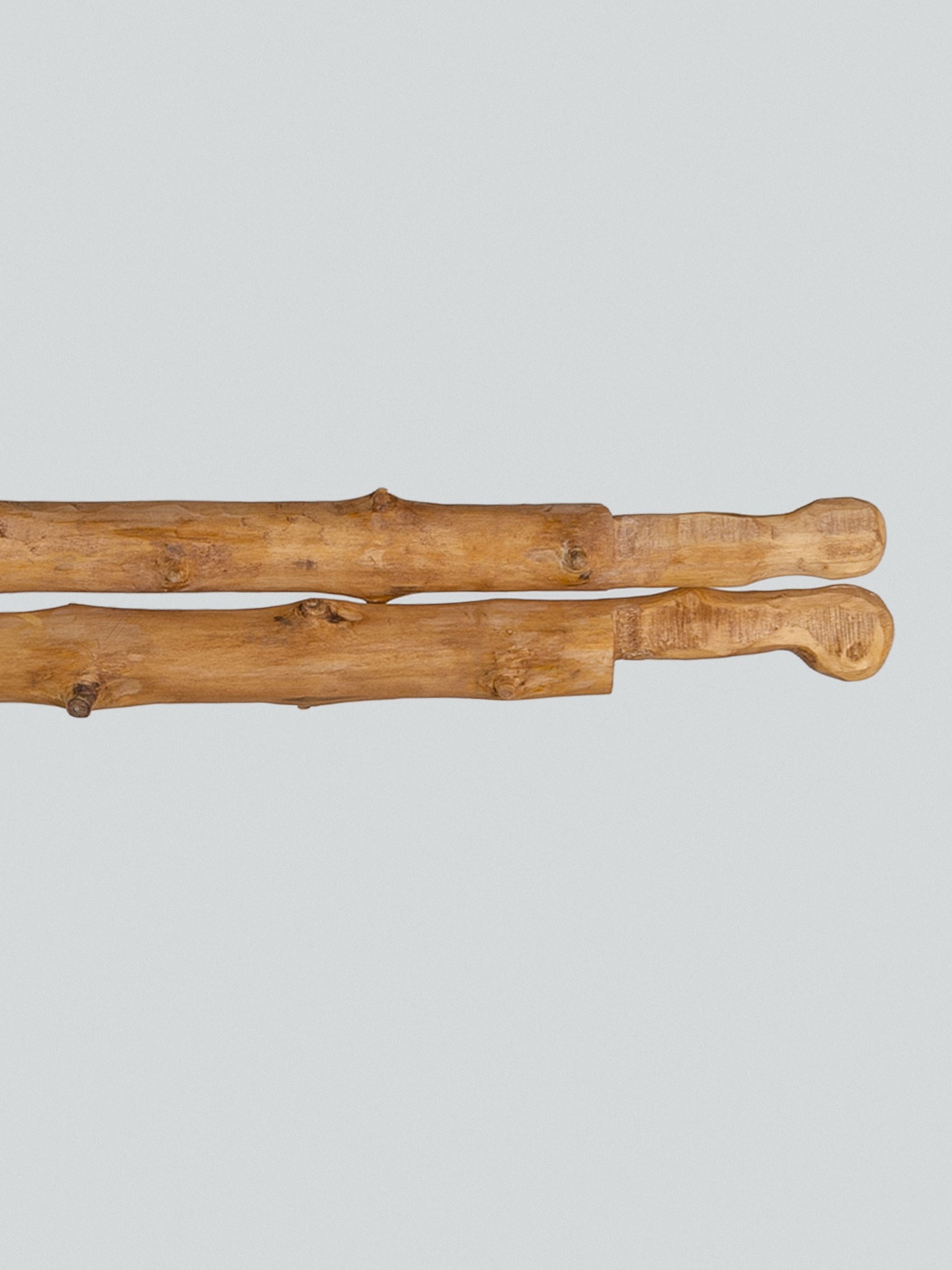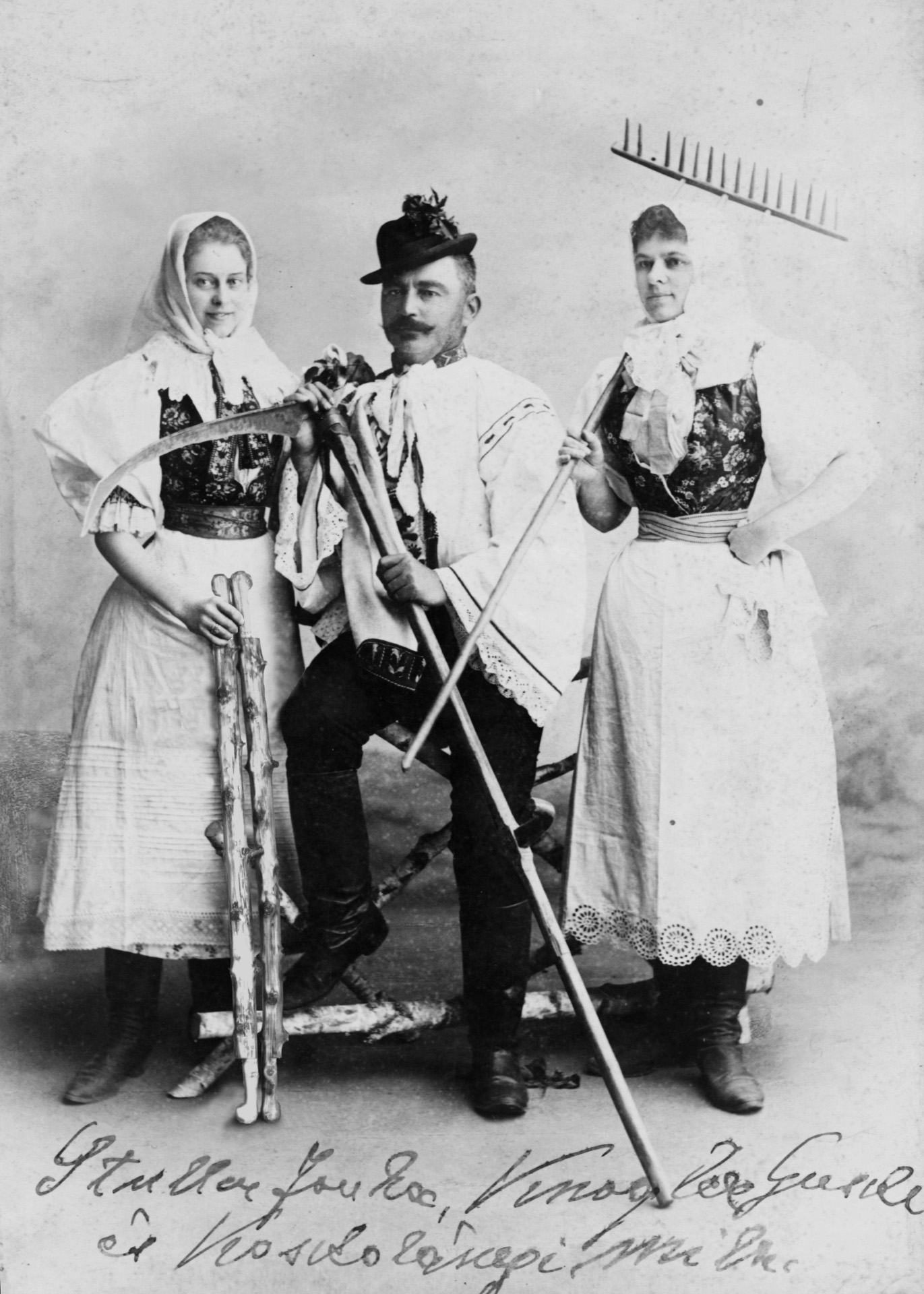Starting with the 14th century, St. Martin's Day (11th of November) was considered as a turning point in the chronicles. It meant the end of the economic year. Also, it was the last holiday ahead of the forty-day fast before Christmas. Farmers thus prepared for the winter season by completing agricultural work.
Following the example of pagan rituals, customs closing the economic year had been preserved in several regions. One of these rituals was the “lullaby” for the agricultural tools on the eve of the first Sunday after St. Martin's Day. The rite was performed in the hope of a successful harvest and abundance for the next year. Everyone did it in the backyard of their own house. When evening fell, they collected their hand tools used for harvesting in one place in their garden, put them in a so-called “chidder” and then dragged the chidder around the house three times. The tool used for this ritual act, the chidder-puller, was in fact a pair of tongs carved from two large branches. If it fell apart under the pull, it meant bad luck for next year's harvest. Etymologically, the word “chidder” may be related to the ecstasy of the ancient pagan Hungarian priests called shamans.
With the conversion to Christianity in Hungary, pagan rites were punished. That’s the explanation why the custom was altered by burning the chidder after use, thereby destroying all evidence.
Márton napja, november 11. már a 14. században is fordulópontként szerepelt a krónikákban. A gazdasági év befejezésének határnapja, a karácsony előtti negyvennapos böjt előtti utolsó ünnepnap. A mezőgazdasági munka befejezésével ekkor megkezdődik a télre való felkészülés.
Pogány rítusok mintájára több térségben fennmaradtak a gazdasági évet lezáró szokások. Ilyen például a Márton-nap utáni első vasárnap előestéjén történő mezőgazdasági eszközök „altatása”. A rítus a jövő évi bőség és a sikeres aratás reményében zajlik. Mindenki a saját háza tájékán végzi, éjszaka: az aratáson használt kézi szerszámait a kertjében egy helyre gyűjti, cséderbe rakja, majd a csédert a ház körül háromszor elhúzza. A cséder két méteres ágból faragott fogópár. Ha a húzás hatására szétesik, az balszerencsét jelent a jövő évi termésre.
Nevének kialakulása összefügghet a régi magyarok sámánjainak eksztázisba esésével.
A keresztény térségekben büntették a pogány rítusokat, emiatt alakult ki a szokás, hogy használat után elégették a csédert, ezzel megsemmisítve minden bizonyítékot.


